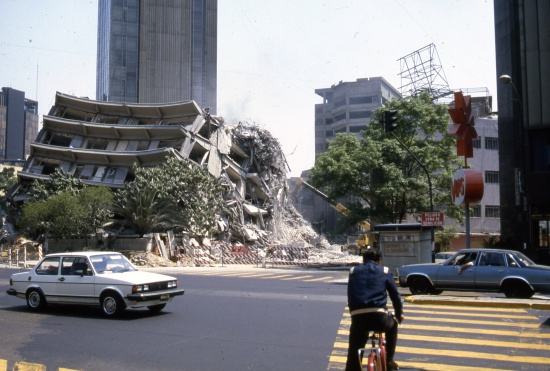Shooter: Network slang for a cameraman
A book in progress by Bob Dutru
Being a “shooter” was “A Job” that kept me nervous, excited, slightly off balance most of the time; kept my adrenaline pumping; took me in luxury and squalor to places that in my wildest imaginings I never dreamed I’d ever go to; gave me the chance to do impossible things that I’d yearned to do all my life; scared the pants off me some of the time; allowed me to meet people, both ordinary and famous that I loved, loathed and adored; placed me in situations that most people had dreams or nightmares about; gave me a real understanding of other peoples’ lives and hopes; and kept me sane, happy and never bored.
I miss it like mad!

I covered the big Mexican earthquake in the late 1980s for ABC’s “Nightline”.
Every major country in the world sent specialized teams to help.
The English sent a Fireman’s unit they keep for major disasters.
The French sent a special dog team to help find survivors. Their Alsatians would point and stay still if there was a body buried beneath the rubble. If the person was still alive the dog would wag his tail, but if the buried person was a child, the dog’s tail would wag frantically and he’d start barking. Children obviously have a different smell. Unfortunately the dogs were useless after three days. The smell of death was everywhere and was by then so strong that it overpowered all other scents.
I was amazed and impressed by the Mexicans there. Without phones, electricity or safe running water, everyone joined in and helped. Cars, trucks, taxis all marked with a white handkerchief to distinguish them, carried the wounded to hospitals and worked as emergency bus services.
Very impressive and I kept wondering if any other country would be as innovative.
There was an engineer we filmed who had been playing with his son a week before the earthquake. They’d been using a cheap microphone and a curved parabolic dish he’d made out of cardboard to listen to each other’s heartbeats.
The engineer borrowed a neck mike from Mexican TV and a satellite dish from a cable company, hung them from a borrowed crane over the tragically collapsed Juarez Hospital and managed to convince all the workers and journalists to keep quiet while he listened.
Suddenly he tore the headphones off and pointed downwards, everyone dug, still wondering if it was a waste of time. But then to our amazement, 20 feet down, they found two babies, both still alive.
One of the most dramatic scenes I ever filmed was this dish at midnight, lit by a floodlight, hovering over the dark site, listening for small sounds of life.
Every time they thought they heard something, they’d yell “¡Silencio!” — and then the quietness would descend. We would all stop moving, hoping against hope. If the mike picked up any cries beneath the dish, the digging would start.
That man and his homemade contraption saved more than 20 people.
They’d built a lot of the new buildings in Mexico City, with the elevator in the center of the building to form a steel core like the rods in reinforced concrete. They also strengthened one corner of the building. This was supposed to make them earthquake proof and probably did help, but to everyone’s amazement, the really earthquake proof buildings were the old Spanish buildings built during the time of the Conquistadors.
They withstood the worst shocks and emerged undamaged.
A lot of wonderful American doctors were helping the relief workers, but I ran into a greedy one.
We’d been filming without much sleep for three days and I’d grabbed a moment to take a brief shower, when a second after-shock occurred. It threw me down onto the edge of the bath and I broke a couple of my ribs.
As a freelancer you only get paid when you work. I didn’t want to leave and go back home, so I struggled on. But to make sure that the broken ribs weren’t near my lungs and could puncture them, I asked a young American doctor to check.
I’d become friendly with him and had taken a lot of shots of him working on the collapsed hospital site. I even got the editor to make a copy of the tape which I gave to him.
The young American doctor gave me a perfunctory 20 second check by feeling my ribs and told me it was okay to keep on working. He then asked for a hundred dollar fee. I thought he was kidding, but he pestered me every day after that. I finally told him that my daily rate for filming was $500. I said I’d prepare a bill for a cameraman’s day rate and charge him for my day and the tape. After he’d paid me, I’d pay him.
Never heard another word from him, but I bet he’s a millionaire now!
To contact Bob Dutru, e-mail him at: [email protected]

